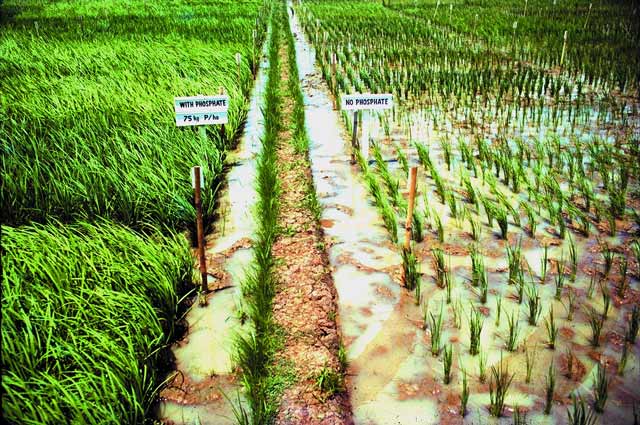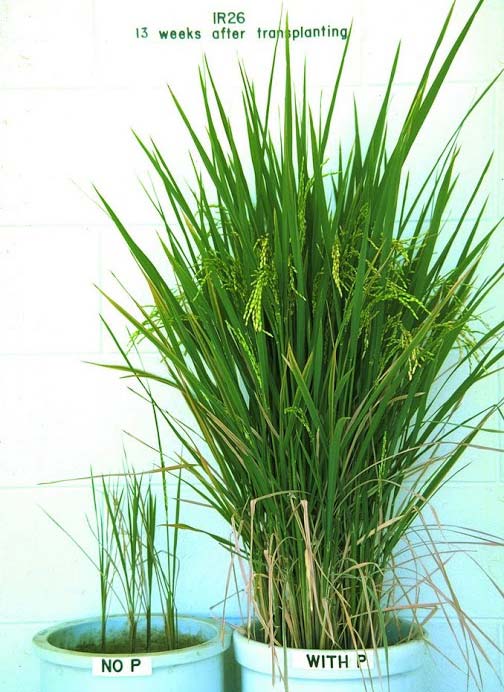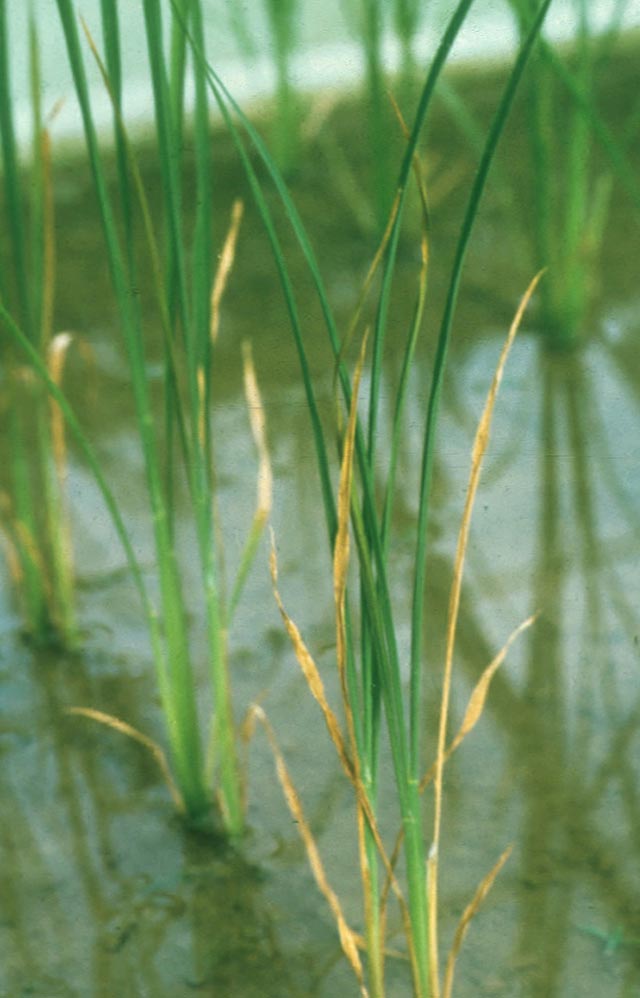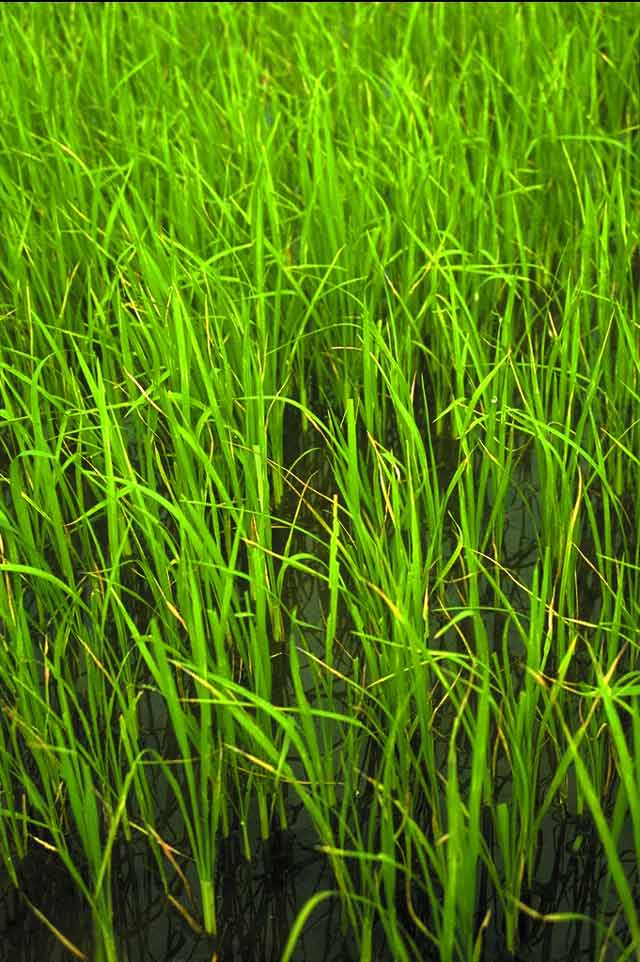Phosphorus (P) deficiency
 What it does
What it does
Phosphorus (P) deficiency affects the major functions in energy storage and transfer of plants. Specifically, it affects tillering, root development, early flowering, and ripening.
Why and where it occurs
Phosphorus deficiency is widespread in all major rice ecosystems and is the major growth-limiting factor in acid upland soils where soil P-fixation capacity is often large.
Soils particularly prone to P deficiency include the following types:
- coarse-textured soils containing small amounts of organic matter and small P reserves (e.g., sandy soils in northeast Thailand, Cambodia)
- highly weathered, clayey, acid upland soils with high P-fixation capacity (e.g., Ultisols and Oxisols in many countries
- degraded lowland soils (e.g., North Vietnam)
- calcareous, saline, and sodic soils
- volcanic soils with high P-sorption capacity (e.g., Andisols in Japan and parts of Sumatra and Java)
- peat soils (Histosols)
- acid sulfate soils in which large amounts of active Al and Fe result in the formation of insoluble P compounds at low pH
How to identify
Check the field for the following symptoms:
- stunted plants
- reduced tillering
- older leaves are narrow, short, very erect, and has a "dirty" dark green color
- stems are thin and spindly and plant development is retarded
The number of leaves, panicles, and grains per panicle is also reduced. Young leaves may appear to be healthy but older leaves turn brown and die.
Also, check for discoloration:
- leaves appear pale green when P and Nitrogen (N) deficiency occur simultaneously
- red and purple colors may develop in leaves if the variety has a tendency to produce anthocyanin
Mild to moderate P deficiency is difficult to recognize in the field. Other effects of P deficiency include delayed maturity (often by one week or more).
When P deficiency is severe, plants may not flower at all. There is a large proportion of empty grains.
When P deficiency is very severe, grain formation may not occur, and it will have:
- low 1,000-grain weight and poor grain quality
- no response to mineral N fertilizer application
- low tolerance for cold water
- absence of algae in floodwater
- poor growth (small leaves, slow establishment) of green manure crops
P deficiency is often associated with other nutrient disorders such as Iron (Fe) toxicity at low pH, Zinc deficiency, Fe deficiency, and salinity in alkaline soils. To confirm P deficiency, bring soil and plant sample to a laboratory for testing.
Why is it important
Phosphorus deficiency is fairly common in irrigated rice, and its damage occurs throughout the growth cycle of the crop.
How to manage
- Use high quality seed of a high yielding variety.
- Use rice cultivars that use P efficiently, particularly on acid upland soils.
- In rice-rice systems, carry out dry, shallow tillage (10 cm) within two weeks after harvest. On acid, low-fertility rainfed lowland and upland soils, all existing soil fertility problems (acidity, Al toxicity, and deficiencies of Magnesium, Potassium, and other nutrients) must be corrected before a response to P is obtained.
- Incorporate rice straw. Although the total amount of P recycled with the straw is small (1 kg P t-1 straw), it will contribute to maintaining a positive P balance in the long term.
- Apply optimum doses of N and K and correct micronutrient deficiencies.
- Replenish P removed in crop products by applying P fertilizers, farmyard manure, or other materials (night soil, compost).
- Apply fertilizers efficiently.


